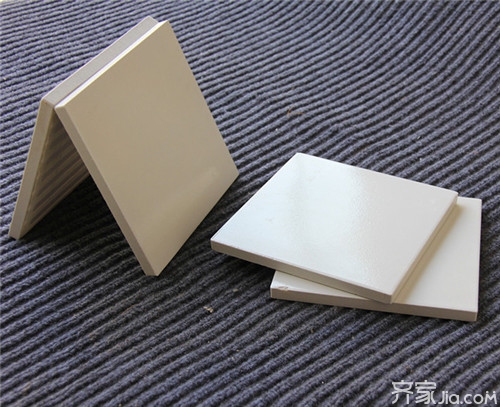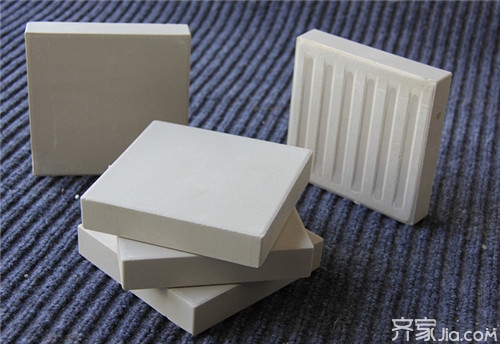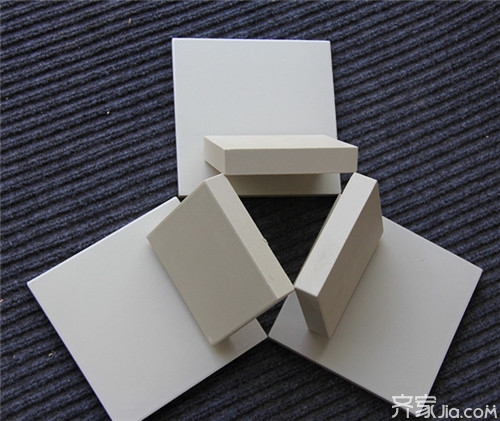ã€Skills】 Acid Resistant Tile Construction Process
Acid-resistant ceramic tiles are not used in home furnishings, but they are used in factories in the petroleum, chemical, food, and pharmaceutical industries. Because acid-resistant ceramic tiles have better corrosion resistance and oxidation resistance, they have been subjected to industrial construction. Love of decoration. What is the construction process of acid-resistant tiles?

What is acid resistant tile?
The main component of the acid-resistant ceramic tile is silica, which forms a large amount of mullite under high-temperature roasting, which is a substance with high acid resistance. Because the acid-resistant brick has a compact structure and a small water absorption rate, it can also be used at room temperature. Resistant to any concentration of alkaline medium, but not tolerant of high temperature molten alkali. Acid-resistant bricks contain more than 70% of silicon dioxide and are sintered. In the chemical industry, they are used in many applications such as sulphonate, acid wells, and acid storage. Acid-bearing large impacted ground.
Acid-resistant ceramic tiles are made of quartz, feldspar and clay as the main raw materials, and are made of high-temperature oxidation-resistant corrosion-resistant materials. They have high acid and alkali resistance, low water absorption, are not easily oxidized at room temperature, and are not easily contaminated by medium, etc. In addition to acids and hot phosphoric acids, they have excellent anti-corrosion effects on warm chlorine salt, hydrochloric acid, sulfuric acid, nitric acid and other acids and alkalis at any concentration at normal temperature. The product is widely used in petroleum, chemical, metallurgy, electric power, chemical fiber, paper, pharmaceutical, fertilizer, food, dairy, juice, electroplating rooms and towers, pools, tanks, tanks and other anti-corrosion projects, and in the underground sewers and open-air ground, etc. Work place can exert its corrosion resistance.

Acid brick construction process
First, floor, wall tile paste part should be carried out according to the following procedure
1, soaked in acid-resistant bricks before paving, and then dried to reach the outer wet, surface water-free trace effect, color selection use.
2. Before laying the acid-resistant bricks, pull the crosshairs in the vertical and horizontal directions.
3, should pay attention to whether the acid-resistant bricks need to paste or paste in a unified direction, cutting tiles must be accurate, door sets, cabinets, etc. at the junction must be tight, the gap should be uniform.
4, when laying floor tiles, with the shop with the clear, always keep clean and clean. (clean with cotton yarn or sawdust), and clean the cement mortar in the brick joints.
5. When the floor tiles are plastered, they must not be trampled by foot. After laying, they should be clean and seamed within 24 hours.
6. After the floor tiles are laid, after the inspection is completed, all the boards shall be covered and protected. The nails on the boards shall be removed. To prevent the entry of foreign matter, the cardboard and the cardboard must be sealed tightly with a sealing glue.
7. In the case of no drainage or no water storage equipment, water must not be used. Do not soak the cardboard used for the protective floor tiles to prevent indirect contamination of the floor tiles.
8, before the completion of the work, the first clean joints, with white cement and talc powder putty, jointing putty lower than 1mm.
Second, sticking acid-resistant tiles precautions
When lining tiles, the bricks must be staggered, the bricks in the same layer should be staggered by 1/3 to 1/2 of the width of the bricks, and the lining bricks should be rubbed and squeezed. The mortar joints should be full and dense, and the surface of the mortar joints should be lighted at any time. The continuous lining height of the facade brick shall be adapted to the cementation time of the clay to prevent deformation of the masonry; the plane lining shall be prevented from sliding; the thickness of the lining brick combined layer shall be 6-8mm and the width of the joint shall be 3-4mm.

Where are the best acid-resistant tiles
Zibo Jinxing Acid Resistant Ceramics Co., Ltd. is a well-known acid-resistant ceramic tile manufacturer in Shandong Province. It has a history of producing acid-resistant ceramic tiles for more than 20 years. It is a key enterprise in producing acid-resistant ceramic tile products in China. The main products are acid-resistant tile ceramic plates, single-sided, double-sided grooves and glazed surfaces. Acid resistant bricks. The company adopts new technologies, new processes, and new equipments, ranking the domestic advanced level. Products throughout the major domestic markets, exports of South Korea, Japan and other countries, the product won the "City," "provincial superior" "quality trust products" title. Acid-resistant ceramic tiles are made of quartz, feldspar and clay as the main raw materials, and are made of high-temperature oxidation-resistant corrosion-resistant materials. They have high acid and alkali resistance, low water absorption, are not easily oxidized at room temperature, and are not easily contaminated by medium, etc. In addition to acids and hot phosphoric acids, they have excellent anti-corrosion effects on warm chlorine salt, hydrochloric acid, sulfuric acid, nitric acid and other acids and alkalis at any concentration at normal temperature.
Summary: The above is the content of acid-resisting tile construction process introduced by Xiao Bian for everyone. We hope that we can effectively help everyone. For more information, please pay attention to this site.
Acid-resistant tile construction installation decoration construction knowledge construction bottoming construction contract
CHANGZHOU ANTALYA TOOL AND MACHINERY CO., LTD. , https://www.atly-tool.com
